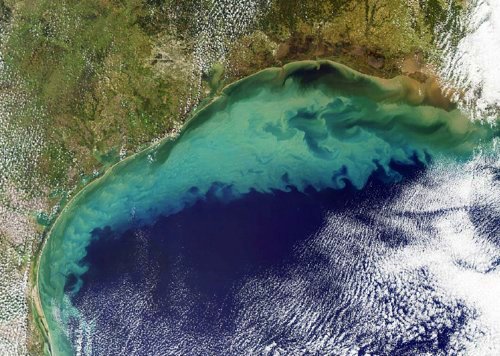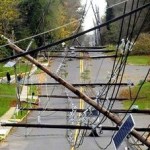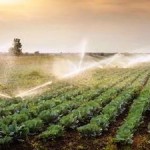Fertilizer Use and Nutrient Pollution
Corn is fertilizer-intensive and every year millions of tons of nitrogen and phosphate fertilizer leach into groundwater and run off cornfields into waterways. Corn fertilizer run-off is the single largest source of nitrogen pollution to the Gulf of Mexico’s hypoxic “dead zone”, an area the size of Connecticut that is devoid of aquatic life.
Mapping county-level USDA corn production data and data on nitrogen loading from the USGS, the report finds:
- Inefficient fertilizer use in 2013 cost growers $420 million from run-off into the Mississippi River, and eventually the Gulf of Mexico. (Nitrate pollution due to fertilizer use by agriculture also costs water utilities $1.7 billion a year according to the USDA.)
- 60 corn ethanol refineries with $8.8 billion in annual production capacity are sourcing corn from watersheds with high local nitrogen pollution from agriculture.

Corn Buyers’ Response
Ceres’ report finds that 16 separate sectors from fast food companies to fertilizer manufacturers to grocery retailers depend on U.S. corn as a key ingredient for their products, or as a market for their inputs and services. In 2013, the top 45 companies in the corn value chain earned $1.7 trillion in revenue, which is more than the annual GDP of Australia.
A growing number of food & beverage companies and grocery retailers are increasing demand for more sustainable products, are setting public goals to source more sustainable ingredients, and are participating in new supply chain initiatives to help farmers address the risks profitably.
Among these encouraging efforts:
- Walmart recently announced a goal for U.S. farmers in its supply chain to increase efficiency of their fertilizer use by 30 percent on 10 million acres of corn, wheat and soybeans by 2020.
- Coca-Cola announced in July 2013 a goal to sustainably source all of its key agricultural ingredients by 2020, including the corn that goes into its high fructose corn syrup.
- Field to Market – a multi-stakeholder initiative involving major growers associations, agribusinesses, food companies, retailers and other groups – has developed sustainability metrics and an online calculator for farmers of U.S. row crops, including corn, to promote continuous improvement and data reporting in the supply chain.
“A critical factor for improving the environmental performance of production agriculture is to get the individuals managing the land, the farmers themselves, to see that environmental stewardship enhances profitability and is crucial to the long term viability of modern agriculture,” said Paul Helgeson, Sustainability Manager at GNP Company, a Minnesota-based poultry company.
Recommendations
Despite these efforts, many companies that depend on U.S. corn are not yet taking steps to address these risks. The report recommends how corn-buying companies and their investors can incentivize farmers to reduce risks, enhance yields and protect water resources.
Recommendations for companies include:
- Setting goals to source corn sustainably. Companies that buy corn should develop a corporate policy that commits them to sourcing agricultural inputs that are grown in ways that reduce impacts to freshwater and the environment. These policies should be tied to measurable, time-bound goals.
- Communicating clear expectations to suppliers. For companies not dealing directly with farmers (i.e., those buying grain from intermediary suppliers), priorities for reducing environmental risks in farming practices should be well communicated to suppliers and integrated into supplier codes and procurement contracts. Where possible, policies, metrics and data requests should be aligned with others in the industry.
- Incentivizing the procurement function. To enable improved sourcing practices, supply chain managers will need additional expertise on environmental risks in agriculture, and should be compensated against performance objectives that include reducing these risks.














